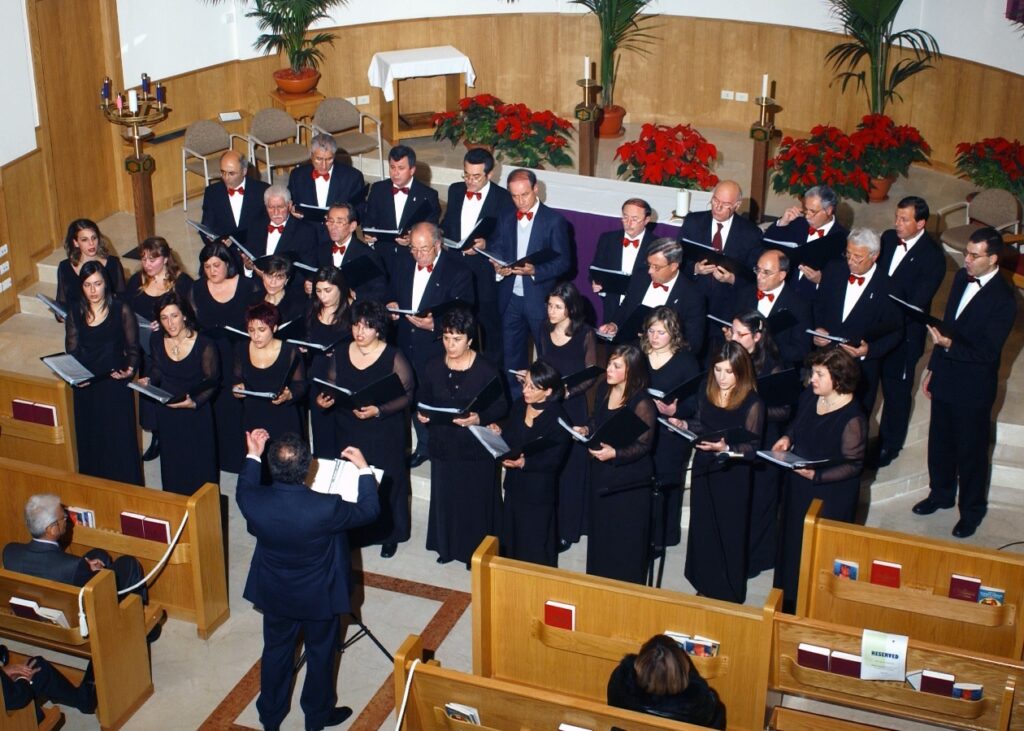
Both of these types of choral music have enjoyed popularity for many hundreds of years. Such was the demand for cantatas during the Baroque era that Georg Philipp Telemann (1686-1767), is credited with having composed an astonishing 1700 cantatas.
JS Bach was also a prolific composer of cantatas and if you listening to either of these fine composers is a solid place to start appreciating this diverse musical form.
Cantata Vs Oratorio
Some consider the cantata to be the natural successor to the madrigal. This was an extremely popular secular vocal composition that dominated the Renaissance landscape. It follows then that the cantata should, as we enter the Baroque era, find its equal footing amongst the many vocal forms of composition.
Even though the cantatas began life in the secular vein they soon became adopted by the church, notably Lutheran, and in particular into the sacred music of Germany.
From a simple recitative and aria structure that can find clear links to early opera, the cantata evolved into a connected series of recitatives followed by the popular ‘Da capo‘ aria. These arias were essentially an ABA structure that often involved the composer varying the return of the A section.
If you are interested to hear the Italian version of the cantata you would do well, to begin with, the works of Alessandro Scarlatti.
One key defining factor when considering cantata and oratorio is the forces for which the piece is composed. The cantata is quite a modest work, usually for relatively small vocal forces and commonly a small group of instruments. No staging of these works took place, no operatic grandeur, just an almost recitative-like setting of the text.
This is perhaps best illustrated in the works of Buxtehude and of course JS Bach. As you may well expect JS Bach did not simply adopt the popular form of cantata but instead developed it, propelling it to exceptional musical heights.
One of these developments was JS Bach’s Chorale Cantatas. These extended pieces would begin with a complex fantasy chorale that used the first stanza of a chosen hymn. JS Bach contrasted this opening with a far simpler setting of the hymn’s concluding stanza.
Many different opinions surround why JS Bach might have done this but the option for the congregation to join in may have been the most plausible.
As the classical era took hold the cantata moved out of favour and off the tables of working composers. Mozart, Mendelsohn, and even Beethoven each wrote cantatas but they were considerably freer in their focus and form with a decidedly more secular slant.
Later British composers like Britten composed cantatas, an example being his setting of the Good Samaritan story in his Op. 69 work ‘Cantata misericordium’. (1963)
Turning to the other contender in the title of this article let’s take a brief look at the oratorio. Scholarly opinion tends towards the beginnings of the oratorio stretching back into the Renaissance Era and lesser celebrated Italian composers such as Giovanni Francesco Anerio and Pietro della Valle.
These composers amongst others in Italy were described as writing sacred dialogues that contained both narrative and drama and were closely related in style to madrigals.
Through the Baroque period, the oratorio gained in popularity. There was a distinct swerve away from the sacred oratorio towards a more secular model with performances beginning to take place in public halls and theatres.
At the centre of the popular texts chosen by composers for the oratorio still was the Life of Jesus or other Biblical figures and stories.
As the oratorio moved into the later part of the Baroque period both the Italian and German composers were composing these works in significant numbers. Interestingly, England was much later to embrace the oratorio.
It was not until GF Handel, who was heavily influenced by his Italian contemporaries, wrote the magnificent oratorios such as ‘Messiah’ and ‘Israel in Egypt’ and ‘Samson’, that England came to adore the oratorio. What GF Handel achieved in his oratorios was an almost perfect fusion of Italian ‘serious’ opera and the very English anthem.
Joseph Haydn continued to compose oratorios in the Classical period, building on the established traditions of GF Handel. Both ‘The Seasons’ and ‘The Creation’ are stunning examples of a classical oratorio. Unlike the cantata, the oratorio enjoyed more success and popularity as the western musical world journeyed onwards.
Composers such as Berlioz, ‘L’enfance du Christ’, Mendelssohn ‘St. Paul’, and Stravinsky’s ‘Oedipus Rex’ and Elgar’s ‘The Dream of Gerontius’ continued to embody the ideals that GF Handel set in place so many years before.
Stravinsky’s work could also be thought of as reuniting opera and oratorio but that is for another article. Oratorio even appealed to legendary Beetle, Paul McCartney whose ‘Liverpool Oratorio’ (1990) was met with great acclaim.
In a similar vein to the cantata, the oratorio is a composition for vocal soloists, chorus, and orchestra. The key difference is that the oratorio is on a far grander scale with the late Baroque or Classical oratorio containing numerous recitatives and arias and lasting up to two hours.
This is in great contrast to the humble cantata. Some oratorios contain some staging directions in the scores that a cantata would not although these seemed to be less common into the late classical period. Equally the chorus was frequently entrusted with aspects of narrative rather than only hymns or prayers commonly part of cantata.
Both the oratorio and the cantata had similar origins and employ similar forces with the oratorio winning out in terms of sheer numbers of performers and duration. Sacred and secular forms of both have been composed since the Baroque era when both vocal forms gained significant popularity.
To an extent, both oratorio and cantata lost ground during the Romantic Era but in more recent times the oratorio has maintained a strong lead over the cantata. There are countless examples of each type of work, everyone having something unique to offer the listener.
